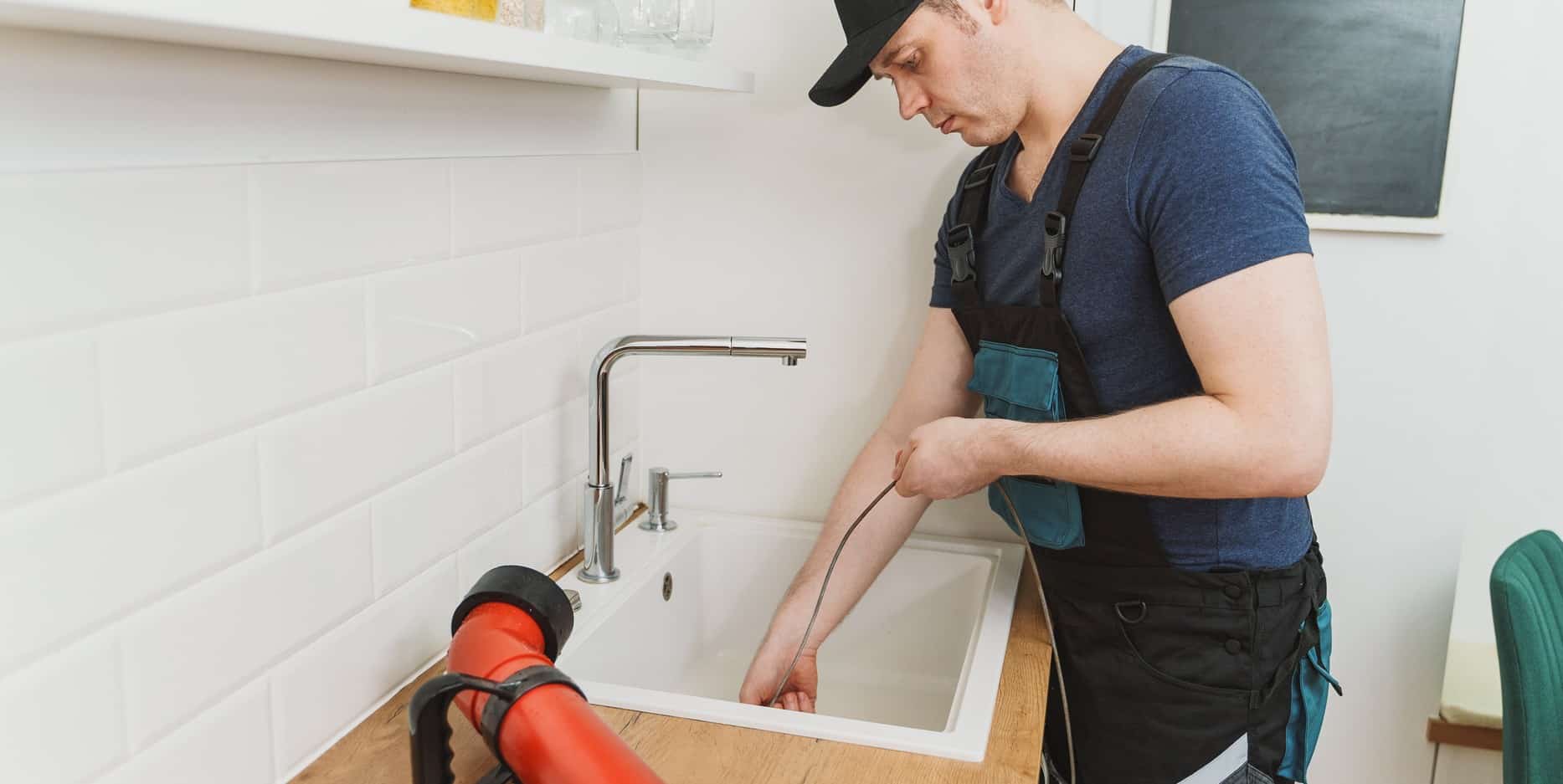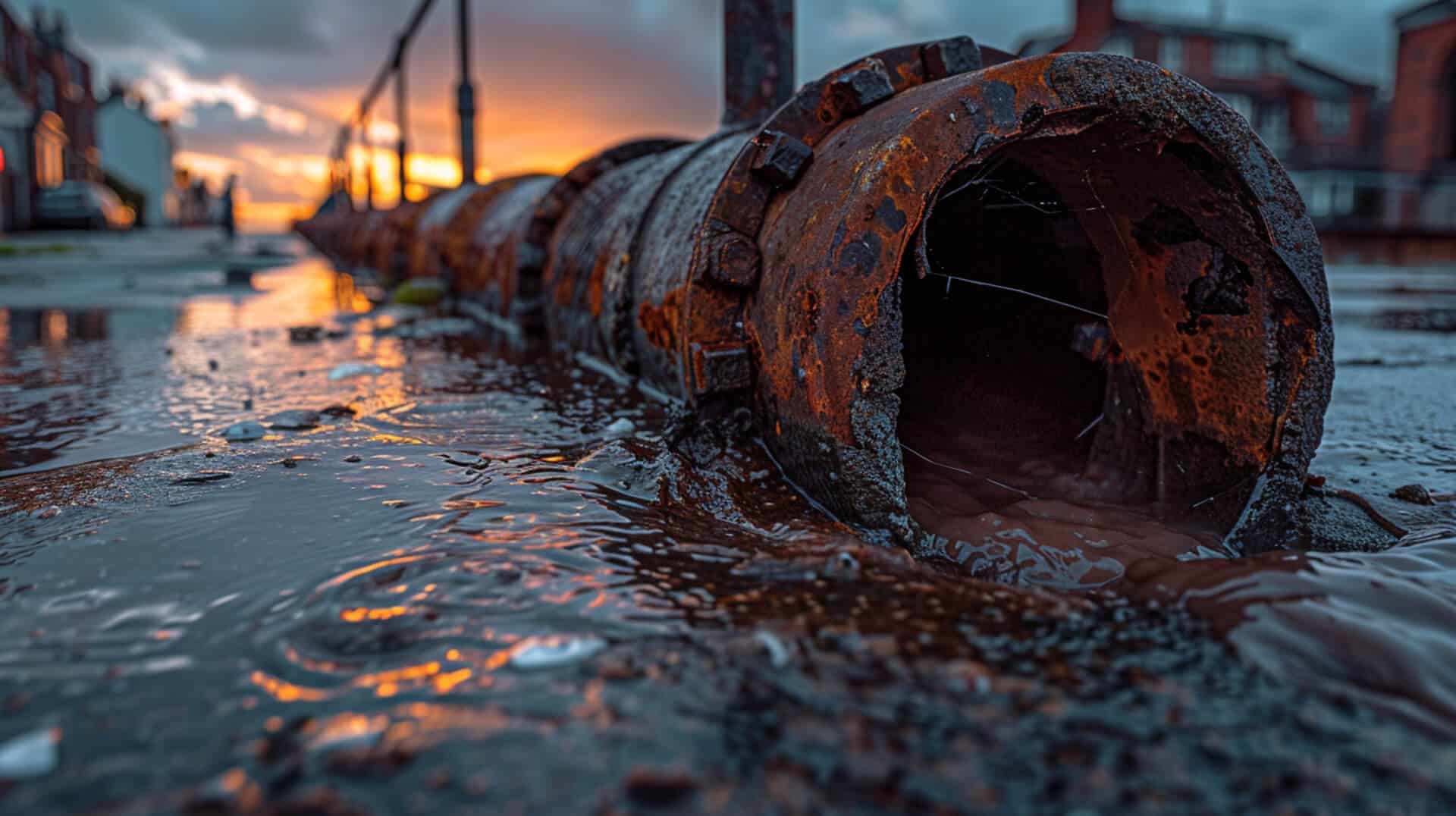 Is Hair the Main Cause of Blocked Drians?
Is Hair the Main Cause of Blocked Drians?
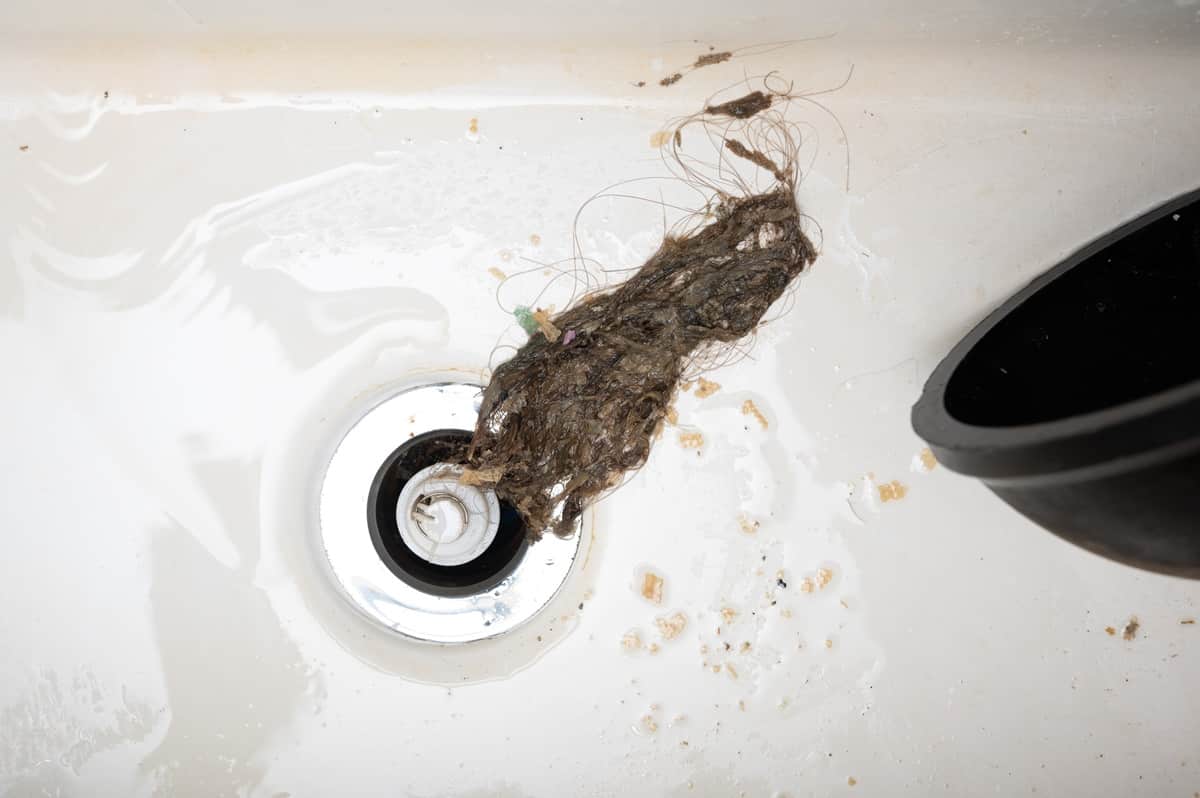
Understanding Hair-Related Drain Blockages
Blocked drains are a common issue in both residential and commercial properties. Various factors contribute to this problem, but hair is one of the most significant culprits. Understanding how hair causes drain blockages and the preventive measures that can be taken is crucial for property owners, business owners, and facility managers.
Common Causes of Blocked Drains
Blocked drains can result from a variety of sources. These include leaves and outdoor debris, hair, poor drain installation, soap, oil, grease, fat, food remnants, tree roots, wet wipes, toiletries, coffee grounds, residues of hair and soap, foreign objects, damaged or collapsed pipes, mineral buildup, and flushing trash.
Why Hair is a Significant Contributor
Hair is a major contributor to drain blockages due to its physical properties and the way it interacts with other substances. When hair enters the drain, it can mix with soap, conditioner, and oils, forming clumps that adhere to the pipe walls. Over time, these clumps accumulate, leading to significant blockages.
Purpose of This Guide
This guide aims to provide comprehensive information on hair-related drain blockages. It is designed to help property owners, business owners, and facility managers understand the causes, preventive measures, DIY methods, professional services, health risks, and long-term consequences associated with hair blockages.
Topics Covered
- Causes of Hair Clogs in Drains: Detailed explanation of how hair contributes to drain blockages.
- Preventive Measures: Practical tips on preventing hair from clogging drains.
- DIY Methods to Unclog Drains: Step-by-step instructions for removing hair clogs.
- Professional Help: Information on when to call a professional plumber.
- Health Risks of Blocked Drains: Explanation of potential health hazards.
- Signs of a Clogged Drain: Common indicators of a clogged drain.
- Impact of Hair Clogs on Plumbing: Description of how hair clogs can lead to severe plumbing issues.
- Environmental Impact: Information on the environmental consequences of improper waste disposal.
- Maintenance Tips: Regular maintenance advice to prevent hair blockages.
- Contact Information for Professional Services: Clear and accessible contact details for local plumbing services.
By addressing these key points, this guide provides valuable information that meets the needs and concerns of visitors searching for solutions to hair-related drain blockages.
How Hair Causes Drain Blockages
Hair is a common cause of drain blockages in both residential and commercial properties. Understanding the mechanisms behind hair accumulation and its interaction with other substances can help in preventing and addressing these blockages.
Mechanisms of Hair Accumulation
Hair accumulates in drains primarily due to its physical properties. When hair is washed down the drain, it tends to get caught on the rough surfaces and bends within the plumbing system. Over time, this accumulation can lead to significant blockages.
Interaction with Soap and Oils
Hair does not act alone in causing blockages. It often interacts with other substances such as soap, conditioner, and oils. These substances can coat the hair, making it sticky and more likely to clump together. This combination forms a dense mass that is difficult to dislodge.
Susceptibility of Bathroom Drains
Bathroom drains are particularly susceptible to hair blockages due to the frequent washing and grooming activities that occur in these areas. Showers, bathtubs, and sinks are common sites where hair is washed away, leading to higher chances of accumulation.
Physical Properties of Hair
The physical properties of hair contribute significantly to its ability to cause blockages. Hair is strong, flexible, and can form tangled masses. Its ability to bind with other materials, such as soap scum and oils, exacerbates the problem, creating a resilient blockage that can impede water flow.
By understanding these mechanisms, property owners, business owners, and facility managers can take proactive measures to prevent hair-related drain blockages and maintain efficient plumbing systems.
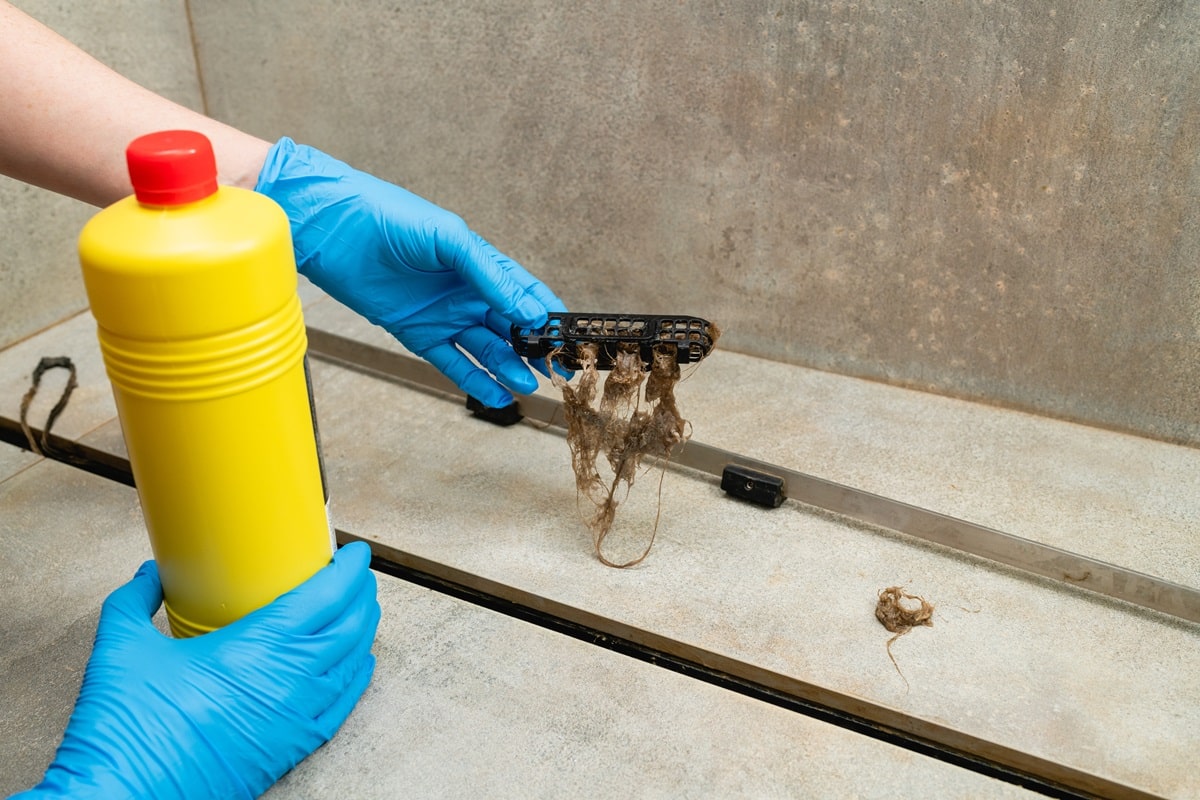
Signs of Hair-Related Drain Blockages
Hair-related drain blockages can cause various issues in plumbing systems. Identifying these signs early can help in addressing the problem before it escalates.
Early Signs of a Hair-Related Drain Blockage
Recognising the early signs of a hair-related drain blockage is crucial for timely intervention. Common indicators include:
- Slow Drainage: Water takes longer to drain from sinks, showers, or bathtubs.
- Standing Water: Persistent water pooling around the drain area.
Identifying Slow Drainage Caused by Hair
Slow drainage is often the first noticeable sign of a hair blockage. This occurs when hair accumulates and restricts water flow. To identify slow drainage:
- Monitor Water Flow: Observe how quickly water drains after use.
- Check Multiple Drains: If multiple drains are slow, the issue may be widespread.
Odours and Sounds Indicating a Hair Blockage
Hair blockages can produce distinct odours and sounds. These include:
- Unpleasant Smells: Foul odours emanating from drains due to trapped debris and stagnant water.
- Gurgling Sounds: Gurgling noises when water drains, indicating air trapped by the blockage.
Importance of Addressing Signs Promptly
Addressing hair-related drain blockages promptly is essential to prevent further complications. Ignoring these signs can lead to:
- Increased Repair Costs: Delayed action may result in more extensive and costly repairs.
- Health Risks: Stagnant water and trapped debris can harbour bacteria and produce harmful gases.
By recognising and addressing these signs early, property owners, business owners, and facility managers can maintain efficient plumbing systems and avoid potential health hazards.
Preventive Measures for Hair Blockages
Preventing hair from entering drains is essential to maintaining efficient plumbing systems. Implementing best practices and regular maintenance routines can significantly reduce the risk of hair-related blockages.
Best Practices for Preventing Hair from Entering Drains
To prevent hair from clogging drains, consider the following practices:
- Use Drain Guards and Strainers: Instal mesh screens or strainers over drains to catch hair before it enters the plumbing system.
- Proper Disposal of Hair: Collect hair from brushes and combs and dispose of it in the trash rather than washing it down the drain.
Effectiveness of Drain Guards and Strainers
Drain guards and strainers are highly effective in preventing hair from entering drains. They act as a physical barrier, capturing hair and other debris. Regular cleaning of these guards ensures they remain effective.
Maintenance Routines to Prevent Hair Blockages
Regular maintenance routines can help keep drains clear of hair and other debris:
- Weekly Hot Water Rinse: Pour hot water down the drain weekly to help dissolve any accumulated soap and oils.
- Vinegar and Baking Soda Solution: Use a mixture of vinegar and baking soda monthly to break down hair and other organic matter.
Educating Household Members or Employees
Educating household members or employees about proper waste disposal practices is crucial. Informing them about the importance of using drain guards and avoiding washing hair down the drain can prevent blockages. Regular reminders and visible signage in bathrooms can reinforce these practices.
By following these preventive measures, property owners, business owners, and facility managers can maintain clear and efficient plumbing systems, reducing the risk of hair-related drain blockages.
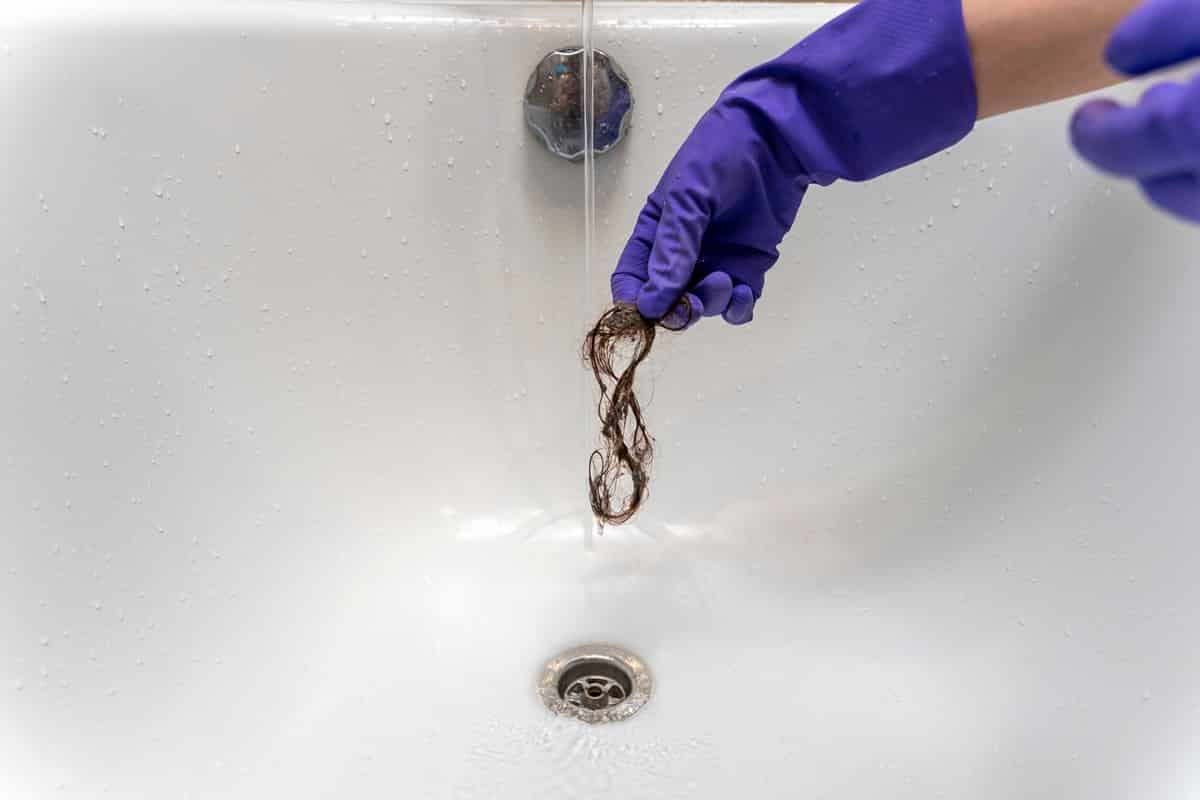
DIY Methods for Unclogging Hair Blockages
Hair blockages in drains can often be addressed using simple, do-it-yourself methods. These techniques can help clear clogs without the need for professional intervention.
Effective Tools for Manual Removal
Several tools are effective for manually removing hair clogs from drains:
- Plumber’s Snake: A flexible auger that can reach deep into pipes to dislodge and remove hair clogs.
- Drain Stick: A plastic tool with barbs that can catch and pull out hair.
- Wire Coat Hanger: Straightened and bent into a hook, it can be used to fish out hair from the drain.
Using Boiling Water to Dislodge Hair Blockages
Boiling water is a simple and effective method for dislodging hair blockages. The heat helps to break down soap and grease that may be binding the hair together. To use this method:
- Boil Water: Heat a pot of water until it reaches a rolling boil.
- Pour Slowly: Carefully pour the boiling water directly into the drain in stages, allowing it to work through the blockage.
Baking Soda and Vinegar Process
A combination of baking soda and vinegar creates a chemical reaction that can help dissolve hair and other organic matter. Follow these steps:
- Pour Baking Soda: Add about half a cup of baking soda into the drain.
- Add Vinegar: Pour half a cup of vinegar into the drain immediately after the baking soda.
- Wait: Allow the mixture to sit and fizz for about 15-30 minutes.
- Flush with Hot Water: Finish by flushing the drain with hot water to clear the dissolved debris.
Avoiding Liquid Drain Cleaners
Liquid drain cleaners are generally not recommended for hair blockages due to their potential hazards:
- Toxicity: These cleaners contain harsh chemicals that can be harmful to health and the environment.
- Ineffectiveness: They may not effectively dissolve hair clogs and can damage pipes over time.
By using these DIY methods, property owners, business owners, and facility managers can effectively address hair blockages and maintain clear drains.

Professional Services for Severe Hair Blockages
Severe hair blockages in drains often require professional intervention. Understanding when to call a professional and the services they offer can help in effectively addressing these issues.
When to Call a Professional for Hair-Related Drain Blockages
It is advisable to call a professional when:
- DIY Methods Fail: If home remedies and tools do not clear the blockage.
- Recurring Blockages: Persistent issues despite regular maintenance.
- Multiple Drains Affected: Indicates a more extensive problem in the plumbing system.
Services Offered by Drainage Specialists
Drainage specialists provide a range of services to address hair blockages:
- CCTV Drain Inspections: Use of cameras to visually inspect the interior of pipes.
- Hydro Jetting: High-pressure water jets to clear blockages.
- Root-Cutting Equipment: Tools to remove tree roots that may exacerbate blockages.
- Drain Cleaning and Maintenance: Regular services to prevent future blockages.
How CCTV Drain Inspections Help Identify Blockages
CCTV drain inspections involve inserting a small camera into the drain to:
- Visualise Blockages: Identify the exact location and nature of the blockage.
- Assess Pipe Condition: Check for any structural damage or deterioration.
- Plan Effective Solutions: Determine the best method for clearing the blockage.
What is Hydro Jetting and How Does It Work?
Hydro jetting is a method that uses high-pressure water jets to:
- Clear Blockages: Effectively remove hair, grease, and other debris.
- Clean Pipe Walls: Remove buildup and restore pipe diameter.
- Prevent Future Blockages: Maintain clear and efficient plumbing systems.
By utilising professional services, property owners, business owners, and facility managers can ensure thorough and effective resolution of severe hair blockages in their plumbing systems.
Health Risks Associated with Blocked Drains
Blocked drains pose several health risks that can affect both residential and commercial properties. Understanding these risks is crucial for maintaining a safe and healthy environment.
Health Risks Posed by Blocked Drains
Blocked drains can lead to various health issues due to the accumulation of waste and stagnant water. These risks include:
- Foul Odours: Unpleasant smells from decomposing organic matter.
- Headaches and Fatigue: Exposure to foul odours can cause headaches and fatigue.
- Stress-Induced Anxiety: Persistent drainage issues can lead to stress and anxiety.
Bacterial Growth in Stagnant Water
Stagnant water in blocked drains creates an ideal environment for bacterial growth. This can result in:
- Illnesses: Bacteria can cause illnesses such as diarrhoea, stomach cramps, fever, and vomiting.
- Infections: Contact with contaminated water can lead to skin infections and other health issues.
Harmful Gases Released from Blocked Drains
Blocked drains can release harmful gases, including:
- Methane: A flammable gas that poses a risk of explosion.
- Hydrogen Sulphide: A toxic gas that can cause respiratory issues and, in high concentrations, can be fatal.
Importance of Promptly Addressing Health Risks
Addressing health risks associated with blocked drains promptly is essential to:
- Prevent Health Issues: Timely intervention can prevent the onset of illnesses and infections.
- Ensure Safety: Reducing the risk of exposure to harmful gases and bacteria.
- Maintain Hygiene: Keeping the environment clean and free from contaminants.
By understanding and addressing these health risks, property owners, business owners, and facility managers can ensure a safe and healthy environment for occupants.
Long-Term Consequences of Ignoring Hair Blockages
Ignoring hair blockages in drains can lead to significant long-term consequences. Understanding these potential issues is essential for maintaining a functional and safe plumbing system.
Structural Damage from Untreated Hair Blockages
Untreated hair blockages can cause structural damage to the plumbing system. Over time, the accumulation of hair and other debris can lead to:
- Pipe Corrosion: Prolonged exposure to stagnant water and waste can corrode pipes.
- Cracks and Leaks: Increased pressure from blockages can cause pipes to crack or leak.
- Pipe Collapse: Severe blockages can weaken the structural integrity of pipes, leading to collapse.
Increased Repair Costs from Ignoring Blockages
Ignoring hair blockages can result in higher repair costs due to:
- Extensive Damage: Delayed intervention can lead to more extensive and costly repairs.
- Emergency Services: Immediate and urgent repairs often come with higher costs.
- Replacement Needs: Severely damaged pipes may require complete replacement.
Potential Health Hazards of Long-Term Blockages
Long-term blockages pose several health hazards, including:
- Bacterial Growth: Stagnant water in blocked drains can harbour harmful bacteria.
- Harmful Gases: Accumulated waste can release toxic gases such as methane and hydrogen sulphide.
- Water Contamination: Blockages can lead to contaminated water, posing health risks to occupants.
Importance of Regular Maintenance
Regular maintenance is crucial for preventing severe issues related to hair blockages. Key practices include:
- Routine Inspections: Regularly checking drains for early signs of blockages.
- Preventive Cleaning: Using methods such as hot water rinses and vinegar solutions to keep drains clear.
- Educating Occupants: Informing household members or employees about proper waste disposal practices.
By addressing hair blockages promptly and maintaining regular upkeep, property owners, business owners, and facility managers can avoid the long-term consequences and ensure a safe and efficient plumbing system.
Environmental Impact of Hair Blockages
Hair blockages in drains can have significant environmental consequences. Understanding these impacts and adopting environmentally friendly disposal methods can help mitigate these issues.
How Improper Disposal of Hair Affects the Environment
Improper disposal of hair, such as washing it down the drain, can lead to environmental problems:
- Water Pollution: Hair and other debris can contribute to water pollution when they enter the sewage system.
- Waste Accumulation: Hair clogs can lead to the accumulation of waste in water treatment facilities, making it harder to process and clean water.
Benefits of Using Environmentally Friendly Disposal Methods
Adopting environmentally friendly disposal methods for hair can provide several benefits:
- Reduced Blockages: Proper disposal reduces the likelihood of hair entering the plumbing system and causing blockages.
- Improved Water Quality: Preventing hair from entering drains helps maintain cleaner water systems.
- Sustainable Practices: Encouraging sustainable disposal methods supports overall environmental stewardship.
Contribution of Hair Blockages to Larger Environmental Issues
Hair blockages can contribute to larger environmental issues, such as the formation of fatbergs:
- Fatbergs: Hair can combine with fats, oils, and grease to form large, solid masses known as fatbergs. These can block sewer systems and cause significant environmental damage.
- Sewage Overflows: Severe blockages can lead to sewage overflows, contaminating natural water bodies and harming aquatic life.
Role of Property Owners and Managers in Environmental Stewardship
Property owners and managers play a crucial role in environmental stewardship by:
- Educating Occupants: Informing residents or employees about proper disposal methods for hair and other waste.
- Implementing Preventive Measures: Installing drain guards and strainers to catch hair before it enters the plumbing system.
- Promoting Sustainable Practices: Encouraging the use of environmentally friendly products and disposal methods.
By understanding the environmental impact of hair blockages and adopting preventive measures, property owners, business owners, and facility managers can contribute to a healthier and more sustainable environment.
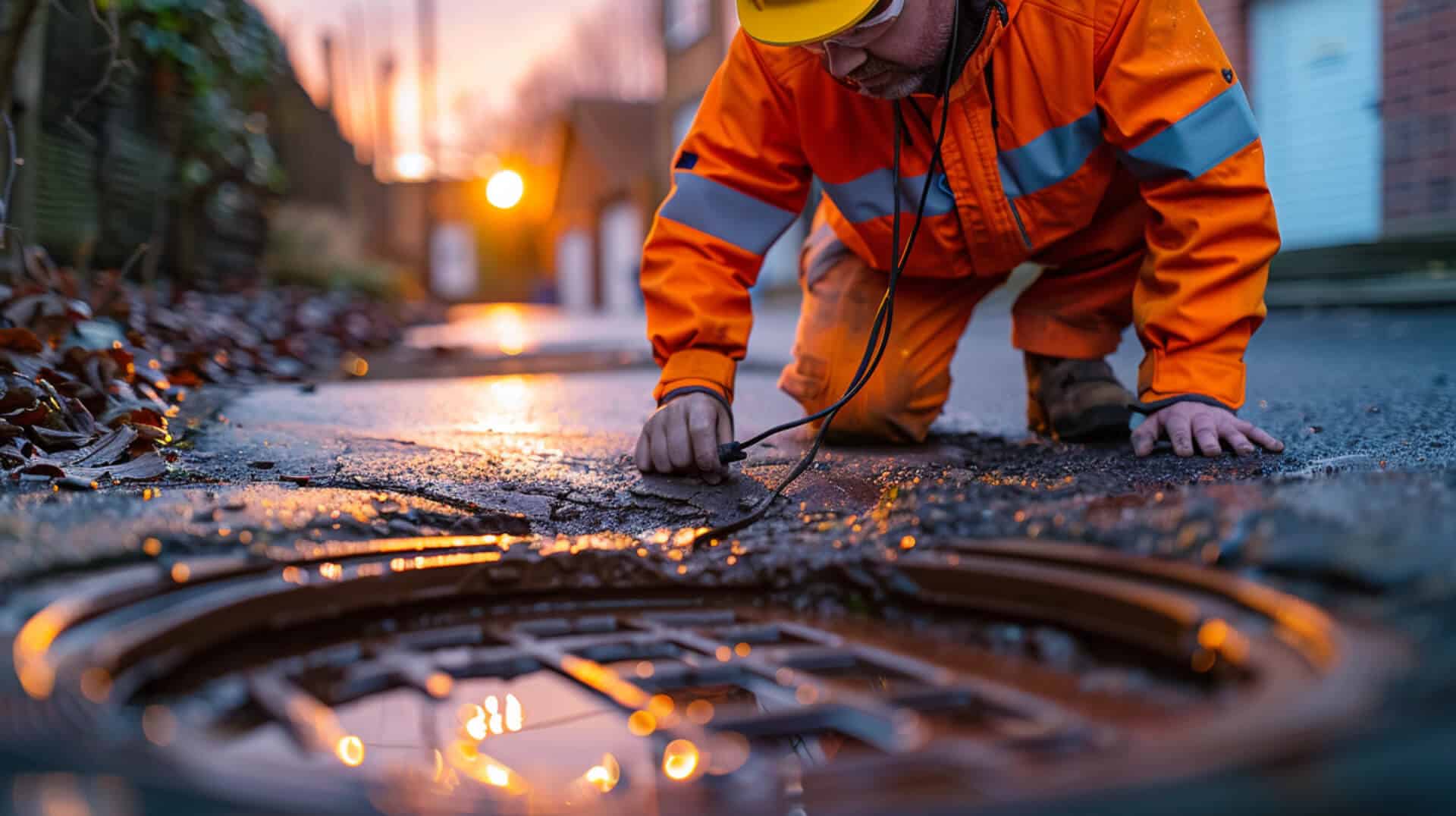
Advanced Technologies for Detection and Removal
Advanced technologies play a crucial role in detecting and removing hair blockages in drains. These technologies enhance the efficiency and effectiveness of maintenance and repair processes.
Latest Technologies for Detecting Hair Blockages
Several advanced technologies are used to detect hair blockages in drains:
- CCTV Drain Cameras: These cameras provide a visual inspection of the interior of pipes, allowing for precise identification of blockages.
- Acoustic Sensors: These sensors detect blockages by analysing sound waves as they travel through the pipes.
How CCTV Drain Cameras Work
CCTV drain cameras are a widely used technology for inspecting drains:
- Insertion: A small, waterproof camera is inserted into the drain.
- Real-Time Video: The camera transmits real-time video footage to a monitor, allowing technicians to see inside the pipes.
- Identification: Blockages, cracks, and other issues are identified visually, enabling accurate diagnosis and targeted solutions.
Benefits of High-Pressure Water Jets for Clearing Blockages
High-pressure water jets, also known as hydro jetting, offer several benefits for clearing blockages:
- Effective Removal: The high-pressure water can break down and flush out hair, grease, and other debris.
- Pipe Cleaning: Hydro jetting cleans the interior walls of pipes, removing buildup and restoring full diameter.
- Preventive Maintenance: Regular use of high-pressure water jets can prevent future blockages by keeping pipes clear.
Improving Maintenance Efficiency with Advanced Technologies
Advanced technologies improve maintenance efficiency in several ways:
- Accurate Diagnosis: Technologies like CCTV cameras provide precise identification of blockages, reducing guesswork.
- Targeted Solutions: Accurate diagnosis allows for targeted interventions, minimising disruption and repair time.
- Preventive Measures: Regular inspections and maintenance using advanced technologies can prevent severe blockages and extend the lifespan of plumbing systems.
By utilising these advanced technologies, property owners, business owners, and facility managers can ensure efficient and effective maintenance of their plumbing systems, reducing the risk of hair blockages and other issues.
Maintenance Tips for Preventing Hair Blockages
Preventing hair blockages in drains requires regular maintenance and proper waste disposal practices. Implementing these tips can help maintain clear and efficient plumbing systems.
Regular Inspections to Prevent Blockages
Conducting regular inspections is essential for early detection and prevention of hair blockages. Key inspection practices include:
- Visual Checks: Regularly inspect visible parts of the plumbing system for signs of hair accumulation.
- Water Flow Monitoring: Observe the speed of water drainage to identify any slowdowns that may indicate a developing blockage.
Proper Waste Disposal Practices
Proper waste disposal practices can significantly reduce the risk of hair blockages. Recommended practices include:
- Avoid Washing Hair Down Drains: Collect hair from brushes and dispose of it in the trash.
- Use Drain Guards: Instal drain guards to catch hair before it enters the plumbing system.
Best Cleaning Routines for Maintaining Clear Drains
Regular cleaning routines help keep drains clear of hair and other debris. Effective cleaning methods include:
- Hot Water Rinse: Pour hot water down the drain weekly to dissolve soap and oils that may bind with hair.
- Vinegar and Baking Soda Solution: Use a mixture of vinegar and baking soda monthly to break down hair and organic matter.
Effective Use of Strainers and Guards
Strainers and guards are effective tools for preventing hair from entering drains. To use them effectively:
- Instal Properly: Ensure strainers and guards fit securely over drains.
- Clean Regularly: Remove and clean strainers and guards frequently to prevent buildup.
By following these maintenance tips, property owners, business owners, and facility managers can prevent hair blockages and maintain efficient plumbing systems.
Final Thoughts and Conclusion
Key Takeaways from This Guide
This guide has provided comprehensive information on the common causes of hair-related drain blockages, preventive measures, DIY methods, professional services, health risks, long-term consequences, environmental impact, advanced technologies, and maintenance tips. Understanding these aspects is crucial for maintaining efficient plumbing systems.
Proactive Maintenance to Prevent Hair Blockages
Proactive maintenance is essential in preventing hair blockages. Regular inspections, proper waste disposal practices, and routine cleaning can significantly reduce the risk of blockages. Implementing these measures helps maintain clear and efficient drains.
Importance of Seeking Professional Help
While DIY methods can address minor blockages, professional help is necessary for severe or persistent issues. Professional services such as CCTV drain inspections and hydro jetting provide effective solutions for complex blockages. Seeking professional assistance ensures thorough and lasting resolution of plumbing problems.
Next Steps for Property Owners, Business Owners, and Facility Managers
Property owners, business owners, and facility managers should take the following steps to maintain clear drains:
- Educate Occupants: Inform residents or employees about proper waste disposal practices.
- Implement Preventive Measures: Use drain guards and strainers to catch hair before it enters the plumbing system.
- Schedule Regular Maintenance: Conduct routine inspections and cleaning to prevent blockages.
- Seek Professional Services: Contact professional plumbers for severe or recurring blockages.
By following these steps, you can ensure the longevity and efficiency of your plumbing systems, reducing the risk of hair-related drain blockages.
